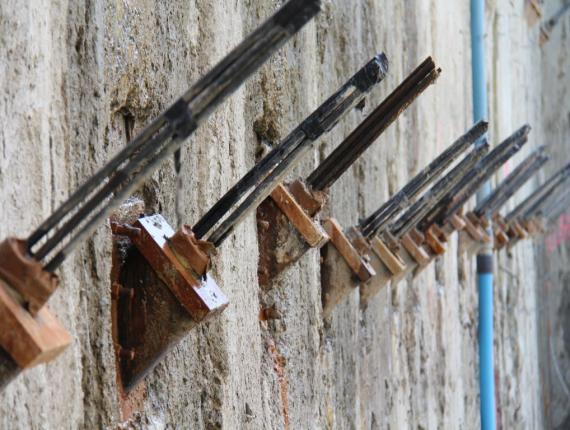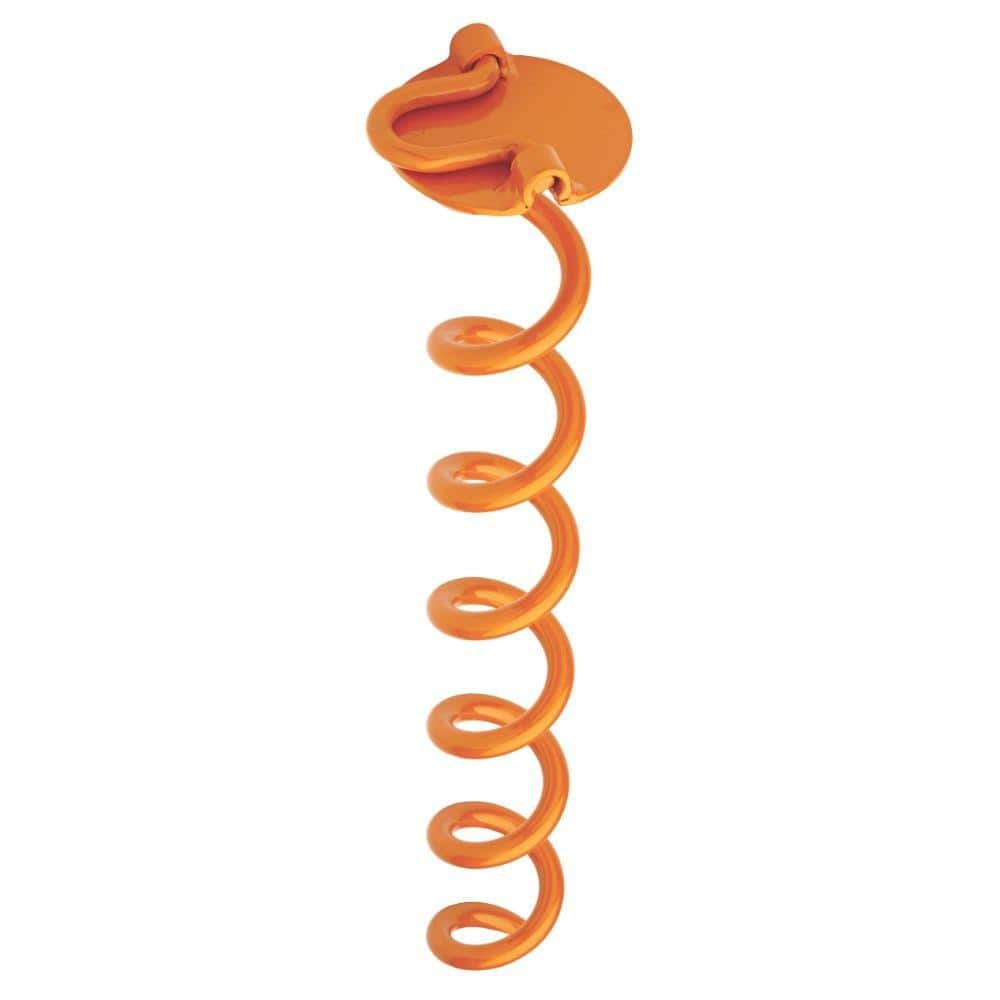How Durable Earth Anchors Work: A Comprehensive Overview to Soil Anchoring Solutions
Durable Earth anchors play an essential function in supplying stability and assistance in different construction applications. By installing deeply into the ground, they resist lateral and upright pressures properly. Different kinds of anchors accommodate different dirt conditions, making them functional. Comprehending their mechanics and installation strategies is crucial for making the most of efficiency. What aspects affect their performance, and how do they compare to typical methods? The responses might amaze you.
Recognizing Heavy-Duty Earth Anchors
Heavy-duty Earth anchors serve as important elements in different building and construction and landscaping projects, offering security and assistance in difficult soil problems. These supports operate by being installed into the ground, where they resist upright and lateral pressures. Their design permits protected add-on to structures, ensuring they remain anchored against soil movement or exterior loads.The performance of sturdy Earth supports largely depends on the kind of soil and the anchor's setup depth. Appropriate installment methods are critical, as they identify the anchor's holding capability. Ecological aspects, such as wetness and freeze-thaw cycles, can likewise impact performance.These supports are often utilized in applications varying from safeguarding fences and preserving wall surfaces to maintaining short-lived frameworks throughout adverse weather. Recognizing the principles behind sturdy Earth anchors is necessary for experts looking for to improve the sturdiness and safety of their tasks.
Types of Heavy-Duty Earth Anchors
Numerous sorts of heavy-duty Earth supports are designed to meet details demands based on dirt problems and project demands. Helical anchors, including screw-like blades, are efficient in softer soils, offering high lots capabilities and simple installment. Driven supports, which are hammered right into the ground, appropriate for rough terrains and provide prompt tons support. Tie-back anchors are commonly made use of in maintaining wall applications, permitting for lateral assistance by anchoring right into the ground at an angle. One more type is the cast-in-place support, ideal for concrete applications, as they are incorporated right into structures for improved stability. Lastly, dirt screw anchors are versatile alternatives that can be used in different soil kinds, supplying trustworthy tension and compression capabilities. Each kind serves unique applications, making certain stability and safety and security in construction and landscape design tasks. Understanding these choices enables informed decisions in choosing the ideal Earth securing remedy.
The Mechanics of Dirt Anchoring

Understanding the technicians of soil anchoring needs an exam of various kinds of Earth supports and their installment techniques. Each anchor type provides unique attributes that affect its performance in various dirt conditions. Appropriate installation techniques are crucial for making the most of the anchoring system's stability and performance.
Kinds Of Earth Anchors
Earth anchors, necessary elements in soil anchoring systems, been available in a number of types, each designed for particular applications and dirt conditions. The most common kinds consist of screw anchors, which are twisted right into the ground, giving strong side resistance. Helical anchors feature blades that allow for reliable installation in various dirt kinds, making them appropriate for both short-lived and permanent applications. Driven anchors, normally made from steel, are inculcated the dirt and work in dense or rocky settings. Auger supports use a helical style to assist in setup in softer soils. Plate anchors are composed of a flat plate buried horizontally, dispersing tons over a bigger area, ideal for applications needing high load abilities in natural soils.
Installment Techniques Explained
Appropriate setup techniques are vital for the performance of dirt anchoring systems. The procedure generally starts with site evaluation, validating the picked area can sustain the support's load. After determining the right anchor type, proper hole depth and angle must be established. The installment includes driving the anchor into the ground making use of specialized equipment, such as hydraulic or hand-operated drivers, to attain finest embedment. Post-installation, tensioning the anchor is important to ensure security; this is typically confirmed with load screening. Furthermore, surrounding soil problems must be monitored to stop variation. Adhering to these strategies not just improves the anchor's performance however likewise prolongs its life-span, supplying trustworthy assistance for different applications.
Applications of Heavy-Duty Earth Anchors
While durable Earth anchors are frequently related to construction and landscaping, their adaptability encompasses a range of applications throughout various industries. In civil engineering, they provide essential assistance for keeping wall surfaces, ensuring stability in locations prone to dirt disintegration. The marine market utilizes these supports for safeguarding anchors and marinas, preventing motion triggered by currents and trends. In addition, in the telecom industry, durable Earth supports are considerable for stabilizing cell towers and various other high frameworks against wind forces. Agricultural applications also profit, website link as these supports can safeguard frameworks like greenhouses and livestock fencing, ensuring they stand up to extreme weather. Furthermore, in renewable energy tasks, such as wind ranches, Earth anchors play a crucial duty in protecting wind turbine foundations, enhancing general safety and security and performance. This wide series of applications highlights the flexibility and reliability of durable Earth anchors across different fields.
Advantages Over Conventional Anchoring Methods
Typical anchoring methods have long been relied upon for stability, durable Earth supports supply considerable advantages that improve performance and performance. One significant advantage is their exceptional load-bearing capacity, which permits them to endure higher pressures without failure. This strength makes them perfect for requiring applications, such as in building and construction and utility installations.Additionally, heavy-duty Earth anchors are designed for deeper setup, giving higher stability in various soil conditions, consisting of loosened or sandy dirts. Their resistance to deterioration and environmental aspects assures a longer lifespan and decreased maintenance prices compared to traditional methods.Moreover, these anchors can be set up with marginal disruption to the surrounding area, maintaining the stability of the landscape. Overall, heavy-duty Earth supports present a effective and reputable solution for anchoring needs, going beyond the restrictions frequently connected with conventional anchoring techniques.
Installment Process and Finest Practices
The installation process for soil anchoring solutions begins with detailed prep work and website analysis to ensure peak performance. Following this, a step-by-step setup guide offers clear guidelines for effective application (Manta Ray anchors). Complying with these ideal techniques is necessary for attaining trustworthy and long-lasting anchoring outcomes
Prep Work and Site Assessment
Efficient prep work and comprehensive website evaluation are vital action in the learn the facts here now installment of soil securing remedies. Before installation, the dirt kind should be analyzed to determine its bearing capacity and viability for anchoring. Conducting a geotechnical study can give crucial details about dirt structure, moisture levels, and potential ground motion. Furthermore, determining existing frameworks, plants, and utilities is essential to avoid disturbance throughout setup. The area needs to be cleared of particles and barriers to ensure risk-free access for tools. Weather must also be monitored, as negative conditions can impact both security and setup efficacy. By diligently preparing the site and reviewing all pertinent variables, the likelihood of successful support performance is significantly enhanced.
Step-by-Step Installment Overview
A detailed setup procedure is essential for accomplishing optimal performance of soil anchoring remedies. The installation begins with selecting the ideal anchor kind and ensuring the website is clear of debris. Next off, proper opening placement is determined based upon lots needs. As soon as the area is developed, openings are pierced to the specified depth and size utilizing the correct devices. The anchor is after that put right into the hole, making certain it is straightened appropriately. After securing the anchor, dirt is backfilled and compressed to enhance stability. It is necessary to comply with supplier guidelines throughout the process. A post-installation evaluation validates that the supports are effectively positioned and functioning as planned, providing trustworthy assistance for the intended application.

Maintenance and Examination of Earth Anchors
Normal maintenance and evaluation of Earth supports are vital for guaranteeing lasting performance and stability. Regular checks permit for the early discovery of issues such as corrosion, loosening, or soil movement. Assessors ought to search for indications of rust or destruction on the anchor elements, particularly at the link factors. In addition, the surrounding soil must be evaluated for erosion or changes in dampness content, which can affect support effectiveness.It is advisable to establish a routine evaluation timetable, ideally a minimum of yearly, depending on environmental conditions. Throughout assessments, all visible parts should be cleansed to eliminate dust or particles that might conceal possible troubles. Any kind of indicators of distress, such as tilting frameworks or uncommon settling, must trigger instant analysis. Proper paperwork of examinations can assist in monitoring support efficiency gradually and assist in timely upkeep activities, making certain the supports remain reputable and practical.
Regularly Asked Concerns
What Materials Are Heavy-Duty Earth Anchors Generally Made From?
Heavy-duty Earth anchors are normally constructed from long lasting materials such as galvanized steel or stainless steel, making sure toughness and resistance to corrosion. These materials provide lasting assistance and stability in different soil problems and applications.
How Do Dirt Problems Impact Support Efficiency?
Dirt conditions significantly affect support performance. Factors such as dirt type, dampness content, and compaction affect the support's grip and stability, with cohesive dirts often offering far better resistance than sandy or loose dirts, impacting total effectiveness.
Can Heavy-Duty Earth Anchors Be Recycled After Removal?
Sturdy Earth anchors can be recycled after elimination, given they are checked for damage and wear. Appropriate cleaning and upkeep boost their durability, making certain reliable efficiency in subsequent installations when problems permit safe reinstallation.
What Are the Ecological Influences of Using Earth Anchors?
The ecological impacts of utilizing Earth supports consist of possible soil disruption, disturbance of regional ecosystems, and feasible contamination of groundwater. If made use of sensibly, their advantages typically outweigh these issues, advertising security in different applications.
Just how Do I Choose the Right Anchor for My Project?

Comments on “The Hidden Reason They're Critical in Seismic Zones”